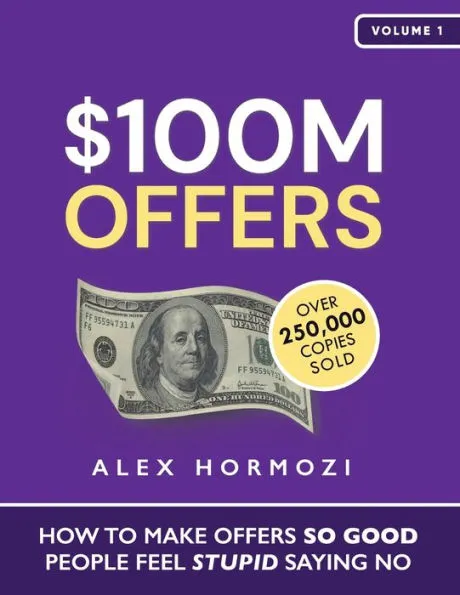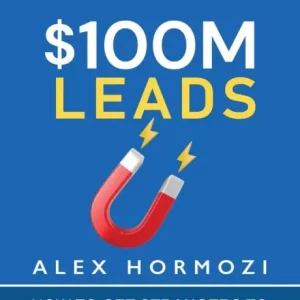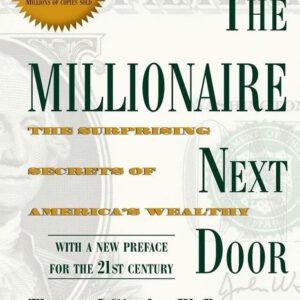I. Introduction
In his book “$100M Offers: How to Make Offers So Good People Feel Stupid Saying No,” Alex Hormozi, a renowned entrepreneur and business strategist, presents a compelling framework for crafting irresistible offers. Released in [Year], the book has garnered attention for its innovative approach to sales and persuasion.
Hormozi, known for his expertise in scaling businesses and generating substantial revenue, shares his insights into creating offers that captivate prospects and drive conversions. Drawing from his own experiences and successes, he distills practical strategies that can be applied across various industries and business models.
The premise of “$100M Offers” revolves around the idea that the effectiveness of an offer lies not only in its content but also in its ability to evoke a strong emotional response from the audience. Hormozi emphasizes the importance of understanding human psychology and leveraging principles of persuasion to craft offers that are virtually impossible to resist.
This review aims to delve into the key concepts presented in the book, examining Hormozi’s strategies for offer creation and evaluating their applicability in real-world scenarios. By analyzing the book’s content, we will uncover its strengths, potential limitations, and the actionable insights it offers to entrepreneurs, marketers, and sales professionals. Through this exploration, readers will gain valuable perspectives on enhancing their offer-making abilities and achieving greater success in their business endeavors.
II. Summary of the Book
“$100M Offers: How to Make Offers So Good People Feel Stupid Saying No” by Alex Hormozi is a compelling guide that delves into the art and science of crafting irresistible offers. At its core, the book aims to equip readers with the knowledge and strategies necessary to create offers that are virtually impossible to refuse, ultimately leading to substantial business growth and success.
Hormozi begins by emphasizing the importance of understanding human psychology and decision-making processes. He emphasizes that effective offers tap into fundamental human desires and motivations, compelling individuals to take action. Throughout the book, he explores various psychological principles and sales techniques that can be leveraged to create offers with unparalleled appeal.
Key chapters in the book include discussions on the significance of value creation, the power of effective communication, and the importance of differentiation in a crowded marketplace. Hormozi provides practical insights and real-world examples to illustrate his points, making the content highly relatable and actionable for readers.
The book is structured in a logical and intuitive manner, with each chapter building upon the concepts introduced in the previous ones. Hormozi employs a conversational tone and avoids unnecessary jargon, making the material accessible to readers of all backgrounds and experience levels. Additionally, the book features exercises and reflection prompts to encourage readers to apply the concepts discussed to their own businesses or endeavors.
Overall, “$100M Offers” serves as a comprehensive roadmap for individuals looking to enhance their ability to create compelling offers. Whether you are a seasoned entrepreneur or just starting out in the world of business, this book offers valuable insights and practical strategies that can help you unlock new levels of success. Through his engaging writing style and wealth of knowledge, Alex Hormozi has crafted a must-read resource for anyone looking to master the art of persuasion and influence in the marketplace.
III. Analysis of Key Themes
In his book “$100M Offers: How to Make Offers So Good People Feel Stupid Saying No,” Alex Hormozi delves into the intricacies of crafting irresistible offers that captivate consumers and drive substantial business growth. Through a blend of psychological insights, strategic pricing techniques, and real-world examples, Hormozi presents a comprehensive framework for designing compelling offers.
Core Concepts and Strategies:
Hormozi emphasizes the importance of understanding human psychology in designing offers that elicit strong emotional responses from consumers. He argues that by tapping into fundamental human desires and fears, businesses can create offers that resonate deeply with their target audience. Central to his approach is the concept of perceived value – the idea that consumers are more likely to accept an offer when they perceive its benefits to far outweigh its costs.
Moreover, Hormozi advocates for the use of scarcity and urgency to heighten the perceived value of an offer. By creating a sense of exclusivity and limited availability, businesses can stimulate a fear of missing out (FOMO) among consumers, compelling them to act swiftly.
Psychology of Crafting Compelling Offers:
Hormozi explores the psychological triggers that influence consumer decision-making processes. He emphasizes the significance of addressing not only rational needs but also emotional desires in crafting offers. Hormozi contends that effective offers appeal to consumers on both logical and visceral levels, creating a powerful incentive for action.
Furthermore, Hormozi underscores the role of social proof and authority in enhancing the credibility of an offer. By showcasing testimonials, endorsements, and expert opinions, businesses can instill confidence in consumers and alleviate doubts or objections.
Insights on Pricing Strategies and Value Perception:
Hormozi delves into the intricacies of pricing strategies, emphasizing the importance of anchoring and framing in shaping consumers’ perceptions of value. He suggests that by strategically positioning prices relative to anchor points and highlighting the unique benefits of an offer, businesses can influence how consumers evaluate its worth.
Additionally, Hormozi discusses the concept of value stacking – the practice of bundling multiple benefits or bonuses to enhance the attractiveness of an offer. By bundling complementary products or services, businesses can create a compelling value proposition that resonates with consumers.
Case Studies and Examples:
Throughout the book, Hormozi illustrates his principles with a variety of case studies and examples drawn from diverse industries. From software subscriptions to luxury goods, Hormozi demonstrates how the same underlying principles of offer design apply across different contexts.
For instance, he highlights the success of Apple’s product launches, which leverage scarcity and anticipation to generate unparalleled demand. By analyzing these case studies, readers gain valuable insights into the practical application of Hormozi’s strategies in real-world scenarios.
Practical Applicability and Relevance:
Hormozi’s principles are highly applicable across a wide range of industries and contexts. Whether selling physical products, digital services, or subscription-based offerings, businesses can leverage his insights to create offers that resonate with their target audience.
Moreover, Hormozi’s emphasis on understanding consumer psychology and crafting emotionally resonant offers transcends industry boundaries. By tapping into universal human desires and fears, businesses can establish deeper connections with consumers and drive sustained loyalty and engagement.
In conclusion, Alex Hormozi’s “$100M Offers” offers a wealth of valuable insights into the art and science of crafting irresistible offers. By understanding the core principles of offer design, businesses can unlock new opportunities for growth and establish themselves as market leaders in their respective industries.
IV. Strengths and Weaknesses
Strengths:
“$100M Offers: How to Make Offers So Good People Feel Stupid Saying No” by Alex Hormozi stands out for several strengths that make it a valuable resource for individuals interested in improving their sales and marketing strategies.
Firstly, the book excels in clarity. Hormozi presents his ideas in a straightforward manner, making it easy for readers to understand and apply his concepts. He avoids jargon and complexity, ensuring that the book remains accessible to a wide audience, regardless of their level of expertise in sales and marketing.
Secondly, the practicality of the strategies outlined in the book is commendable. Hormozi provides actionable advice and real-life examples that readers can readily implement in their own businesses or professional endeavors. By offering concrete steps and techniques, he empowers readers to translate theory into practice effectively.
Moreover, the innovation demonstrated in “$100M Offers” sets it apart from other books on sales and marketing. Hormozi introduces fresh perspectives and unconventional approaches that challenge conventional wisdom. He encourages readers to think outside the box and experiment with new methods, fostering a mindset of innovation and adaptability.
Weaknesses:
Despite its strengths, “$100M Offers” may face some limitations and criticisms. One potential criticism is its applicability to specific business models or industries. While the strategies outlined by Hormozi may be effective in certain contexts, they may not necessarily be suitable for all businesses or industries. Readers should critically evaluate the relevance of the book’s recommendations to their own unique circumstances.
Furthermore, the real-world implementation of Hormozi’s strategies may encounter challenges and limitations. While the book provides valuable insights and guidance, success in sales and marketing often requires a nuanced understanding of market dynamics, consumer behavior, and competitive landscapes. Implementing Hormozi’s techniques may require adaptation and customization to align with the complexities of individual business environments.
In conclusion, “$100M Offers” offers valuable insights and practical advice for improving sales and marketing strategies. Its strengths lie in its clarity, practicality, and innovation. However, readers should be mindful of its potential limitations and consider the applicability of its strategies to their specific business models and industries. While Hormozi’s approach may face challenges in real-world implementation, it nonetheless serves as a valuable resource for those seeking to enhance their sales and marketing effectiveness.
V. Comparisons to Similar Works
“$100M Offers: How to Make Offers So Good People Feel Stupid Saying No” by Alex Hormozi stands out among the plethora of books on sales techniques, offer creation, and persuasion psychology due to its unique approach and practical insights.
In comparison to similar works like “Influence: The Psychology of Persuasion” by Robert Cialdini or “Pitch Anything” by Oren Klaff, Hormozi’s book offers a more contemporary and actionable framework specifically tailored for crafting irresistible offers. While Cialdini and Klaff delve into the psychology behind persuasion and pitching, respectively, Hormozi’s focus is squarely on creating offers that are practically irresistible, tapping into deep human desires and emotions.
What distinguishes “$100M Offers” is its emphasis on leveraging the power of storytelling and emotion to craft offers that resonate deeply with potential customers. While many sales books touch upon the importance of emotion, Hormozi provides concrete strategies and examples to effectively integrate storytelling into the offer creation process. By illustrating how to tap into customers’ emotions and aspirations, Hormozi helps readers understand how to create offers that not only meet their needs but also fulfill their deepest desires.
Moreover, Hormozi’s approach complements established principles in sales and marketing by providing a fresh perspective and practical tools for implementation. While traditional sales techniques often focus on features and benefits, “$100M Offers” encourages readers to dig deeper into understanding the underlying motivations and aspirations of their target audience.
In summary, “$100M Offers” stands out in the realm of sales literature for its practical approach to offer creation, emphasis on storytelling and emotion, and alignment with established principles in sales and marketing. It serves as a valuable resource for anyone looking to elevate their offer creation process and achieve greater success in sales and marketing endeavors.
VI. Personal Reflection and Recommendations
After reading “$100M Offers: How to Make Offers So Good People Feel Stupid Saying No” by Alex Hormozi, I find myself reflecting deeply on the power of crafting compelling offers and the psychological dynamics behind successful sales strategies. Hormozi’s insights into understanding consumer behavior and leveraging it to create irresistible offers are both enlightening and practical.
Entrepreneurs, marketers, and sales professionals stand to gain immense value from this book. Entrepreneurs can learn how to structure their products or services in a way that resonates deeply with their target audience, ultimately leading to increased sales and customer satisfaction. Marketers can refine their messaging and positioning to highlight the unique value propositions of their offerings, while sales professionals can adapt their approach to create more persuasive pitches and close deals more effectively.
For those seeking to apply Hormozi’s principles in practical settings, I recommend starting by conducting a thorough analysis of their target market and understanding their customers’ pain points and desires. From there, they can begin experimenting with different offer structures, pricing strategies, and messaging tactics to see what resonates most with their audience. Additionally, implementing feedback loops and continuously iterating on their offers based on customer responses will be key to long-term success.
In conclusion, “$100M Offers” offers invaluable insights into the art and science of creating irresistible offers that compel customers to say yes. By applying Hormozi’s principles and recommendations, entrepreneurs, marketers, and sales professionals can elevate their strategies and drive greater success in their respective fields.
VII. Conclusion
In conclusion, “$100M Offers: How to Make Offers So Good People Feel Stupid Saying No” by Alex Hormozi emerges as a groundbreaking guide for mastering the art of compelling offers. The review highlights the author’s strategic insights, practical tips, and real-world examples that demystify the complexities of sales and marketing. This book serves as a valuable resource, equipping readers with the tools to craft irresistible offers, ultimately driving business growth. Its significance lies in its transformative potential for entrepreneurs, marketers, and sales professionals, making it an indispensable asset in the competitive landscape. “$100M Offers” not only delivers on its promise but sets a new standard for excellence in the field, promising to reshape perspectives and redefine success in the business arena.



